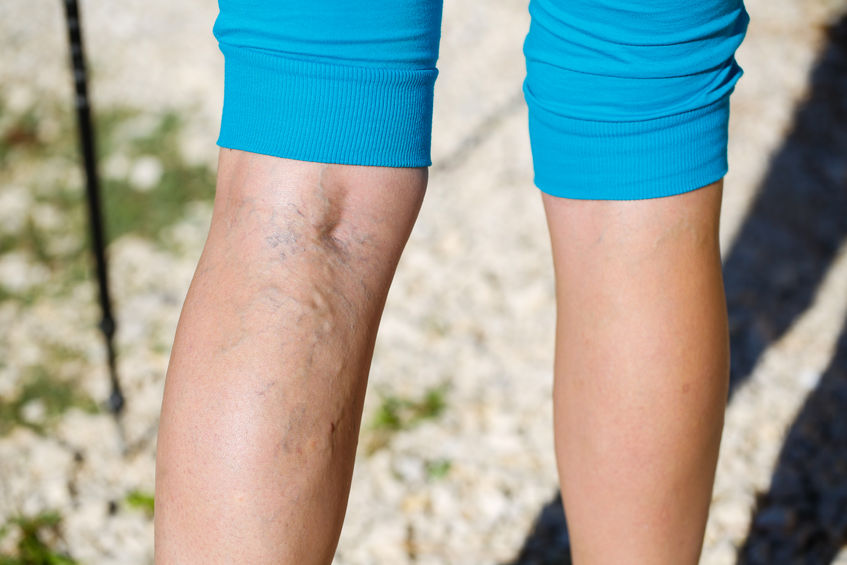Varicose veins are bluish, distorted veins that bulge beneath the skin; usually develop inside the leg, back of the calf, or ankle. Varicose veins develop due to faulty valves in veins and weakened vein walls. An affected leg may feel heavy and ankle may swell, and the skin over the veins may be dry and itchy. Varicose veins are more common in women and often run in families. Varicose veins may also result from conditions that increase pressure on the leg veins, such as pregnancy, constipation, being overweight, or having an occupation that requires standing for long periods.
Varicose Vein Symptoms
- An achy or heavy feeling in your legs, particularly after sitting or standing for a long time.
- Burning, throbbing and swelling in your lower legs.
- Night-time cramps in the legs.
- Veins appear dark purple or blue in color.
- A creeping sensation across the skin.
Home Remedies for Varicose Veins
- Marigold: Apply a compress of marigold on the affected area. Marigold is rich in antioxidant compounds and vitamin C, both of which helps protect the skin and maintain the health of veins and capillaries.
- Carrot and spinach: Mix 3/4 cup carrot juice with 1/4 cup spinach juice and drink daily for few days.
- Compression stockings: Wear compression stockings. Put them first thing in the morning before your ankles start to swell.
- Hot and cold bath: Take alternate hot and cold hip bath daily.
Do’s for Varicose Veins
- Include plenty of high-fiber food in diet such as vegetables, fruits, whole-
grain cereals, and brown rice. - Drink 6-8 glasses of water a day.
- Eat foods rich in vitamin C and E.
- Keep legs elevated, ideally at or above heart level. Use a footrest at work
and a footstool or ottoman at home to elevate your feet. Don’t place
anything directly under your knees. - Exercise regularly such as walking, cycling, and swimming, to boost
circulation. - Lose weight if you are overweight.
- Apply moisturizer if the skin is dry and itchy over the veins.
Don’ts for Varicose Veins
- Avoid standing for long periods. If unavoidable, flex your calf muscles
every few minutes and wiggle your toes. - Don’t sit for long periods, get up every 30 minutes and walk around.
- Don’t cross your legs when you sit down, as it restricts blood flow in the
lower legs. - Avoid socks or knee-highs with tight elastic.
- Avoid tea, coffee, alcohol, and white flour products.
- Don’t smoke.
See Doctor
- Varicose veins are getting worse or new ones develop.
- Vein becomes red and feels warm.
- Skin over a varicose vein becomes discolored, sore, or weepy.
★★ Get our FREE Mobile app, Recommended by 90+ Doctors. Stay Healthy! ★★

The steps you can take at home, like exercising and losing extra weight, that can make you healthier and may prevent new varicose veins or spider veins from forming. These steps may also help your legs feel better by relieving pain and discomfort.